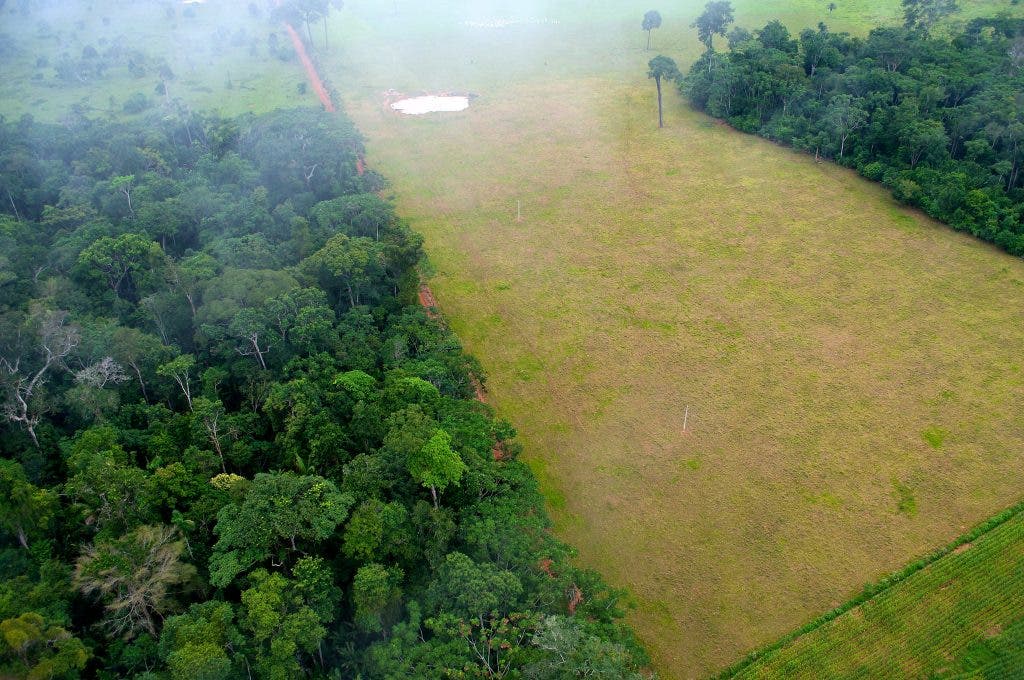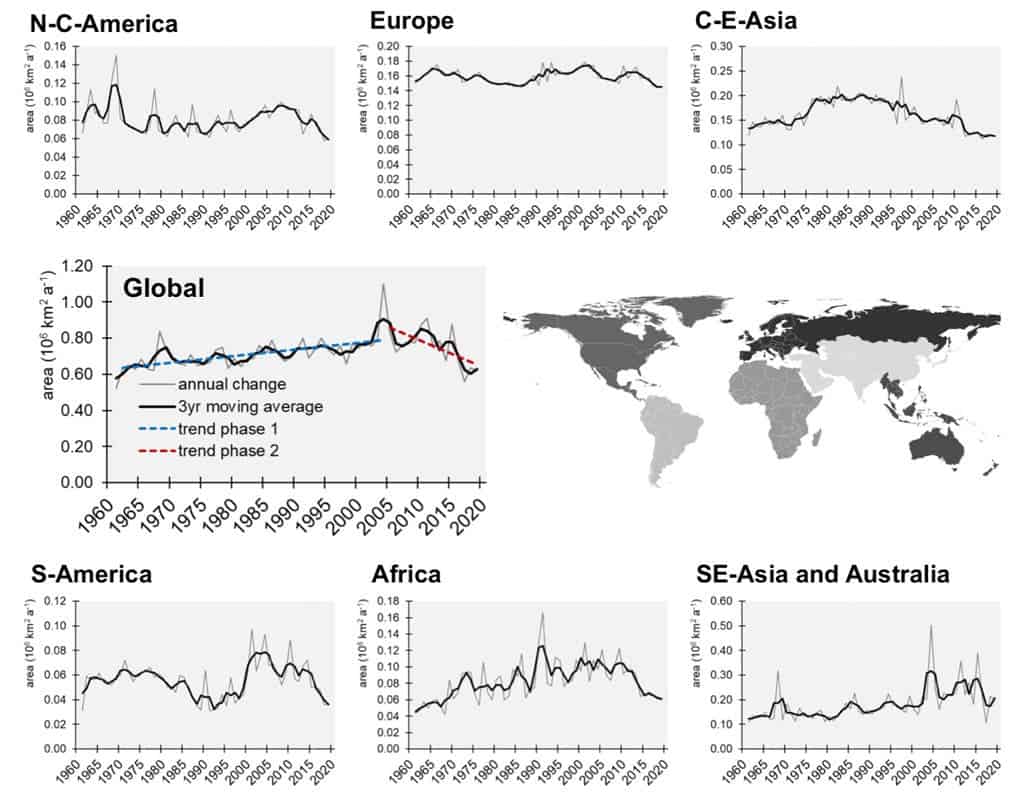A third of the global land surface, or 43 million squared kilometers, has been subject to change from 1960 to 2019, driven by an expansion in agriculture and cattle ranching, a new study shows. This means that on average a land area of about twice the size of Germany (720,000 squared kilometers) has been altered every year since 1960.

“Land-use change” refers to ways in which humans alter the natural landscape. This can be permanent destruction, such as urban expansion, or just temporary. Some changes, such as forest restoration or regeneration, may attempt to repair previous damage. Overall, it’s a widespread phenomenon, previous studies have shown. But we weren’t expecting it to be this widespread.
Land use is usually measured by high-resolution satellite imagery and by large-scale statistical surveys. But each method has its own shortcomings when assessing land-use change. Satellites can capture land use in high detail, but their records only extend back a few decades, while statistical methods go further back in time but at a worse resolution.
Little work has been done to combine both approaches – until now. Karina Winkler, a physical geographer at Wageningen University & Research in the Netherlands, and her colleagues brought together more than 20 satellite land-use products and long-term surveys. The resulting dataset captures changes in land use with a 1km resolution.
But not all land-use change is permanent. So instead of looking at “net” changes that only capture the overall transformation of an area, the dataset captures places where land use has changed multiple times, such as rotation between cropland and pasture. When this is added, the extent of land-use change is really massive.
The map below, done by the researchers shows where both single-change (yellow shading) and multiple-change (red) events are occurring around the world. Instances of multiple-change events are dominant across Europe, India, and the US, while single-change events are widespread across South America, China, and south-east Asia.

Land-use change
For their study, Winkler and her team established six categories of land use, following the definitions used by the Food and Agriculture Organization (FAO): urban areas, cropland, pasture, unmanaged grassland, forest, and sparsely vegetated land. Notable patterns jump out when looking at what types of change are occurring where.
For example, about half of the single-change events (or nearly 20% of the total changes) happen because of agricultural expansion, such as deforestation. And 86% of the multiple-change events are agriculture-related, predominantly happening in the global north and select rapidly growing economies.
Averaged globally, land-use change steadily increased for nearly half a century. But, in 2005, there was a “rather abrupt change” in this trend and land-use change began decelerating worldwide, the authors found. This is most evident in Africa, South America, and regions of Subtropics and Tropics and linked to market developments.
The charts below show the differences in land-use change rates in six geographical regions, as well as the worldwide average. The global rates of change are defined by an acceleration period from 1960 to the early 2000s, followed by deceleration since about 2005. Land-use change is responsive to “socio-economic developments,” the authors write.

Almost one-quarter of total human-caused greenhouse gas emissions between 2007 and 2016 were due to agriculture, forestry, and other land use, according to the Intergovernmental Panel on Climate Change (IPCC). This falls just behind electricity and heat production as the world’s second-largest contributor to global emissions.
But if conserved properly land can actually help bring down emissions, acting as a sink of greenhouse gases – for example with the carbon absorbed by the forests. The balance of sources and sinks through land-use change, the IPCC says, is a “key source of uncertainty” in considering the future of the land carbon cycle.
The study was published in the journal Nature Communications.



